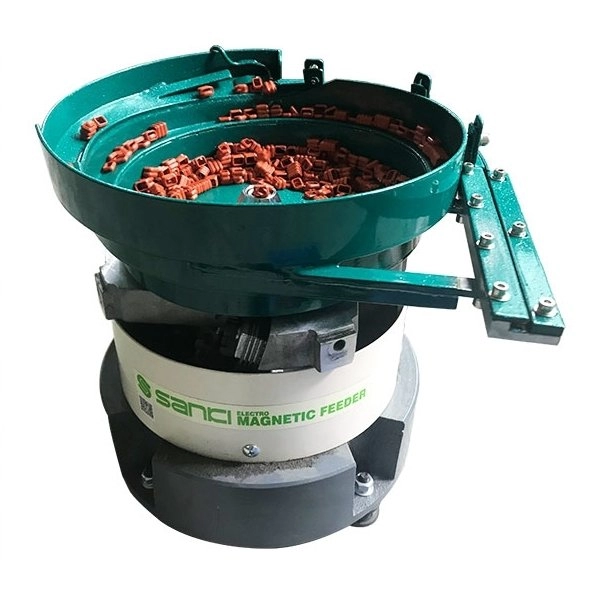What Is Vibratory Bowl Feeder
Under the action of the electromagnetic vibrator, the hopper vibrates up and down to make the workpieces move from bottom to top along the spiral track, and are automatically oriented until they enter the feed chute from the upper output. And then they are sent to the corresponding worker by the feeding mechanism.
Due to the attraction of the electromagnet and the reverse resetting action of the supporting spring, the trough generates high-speed, high-frequency (50~100 times/second) and micro-amplitude (0.5~1mm) vibration, which move toward the workpieces to the top. As a result, this is the working process of the vibratory upper feeder.
When I=0, the trough is reset to the upper right by the support spring, and the workpieces move to the upper right with the friction of the rail and is gradually accelerated.
When I>0, the trough moves to the lower left under the attraction of the electromagnet, and the workpieces deviate from the orbit due to inertia, and continues to move to the upper right (slip or jump).
Over and over again → the workpieces move from bottom to top on the track.
18 Jun 2019



